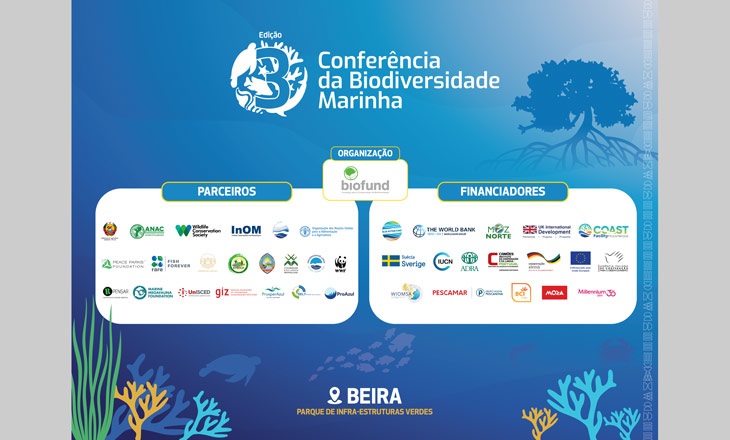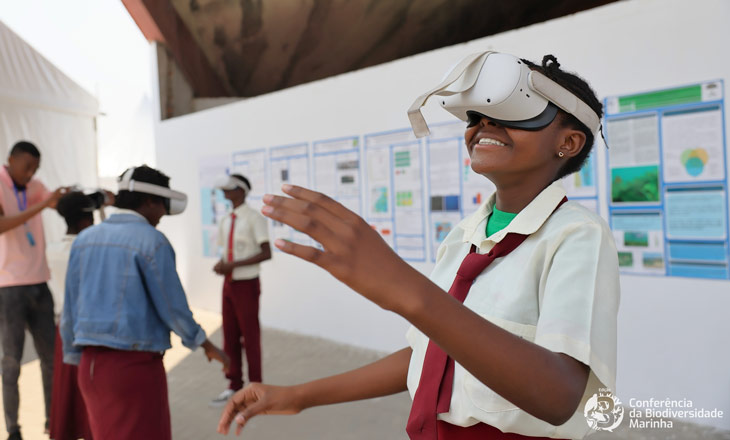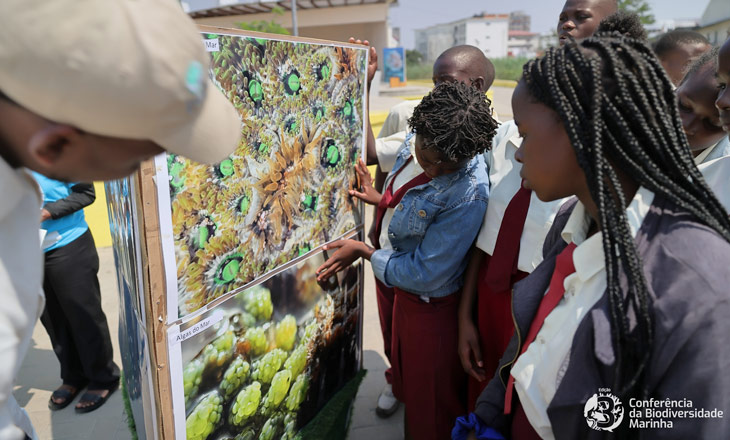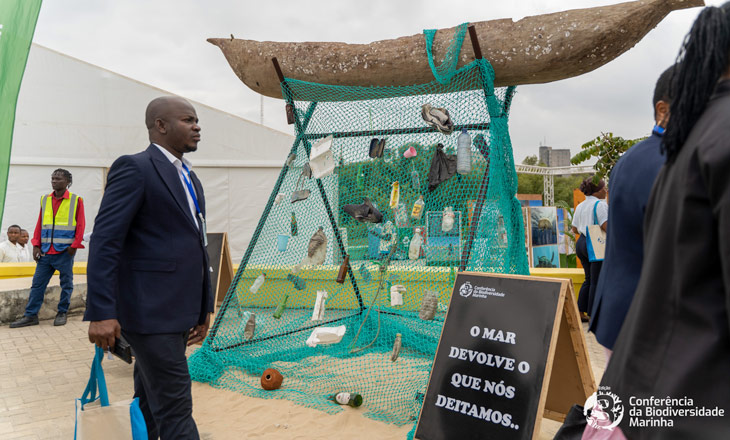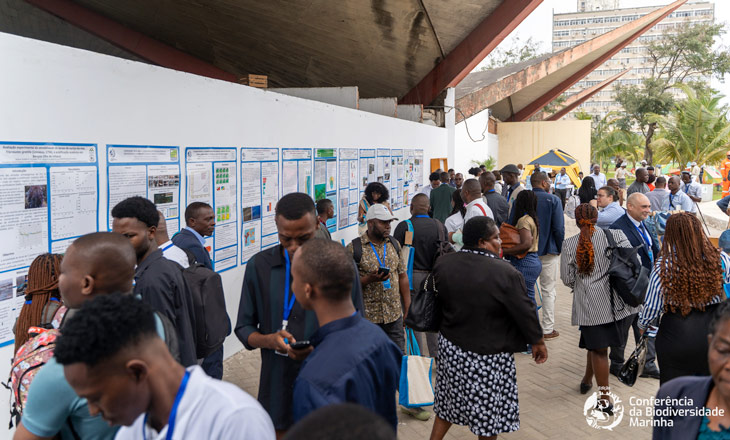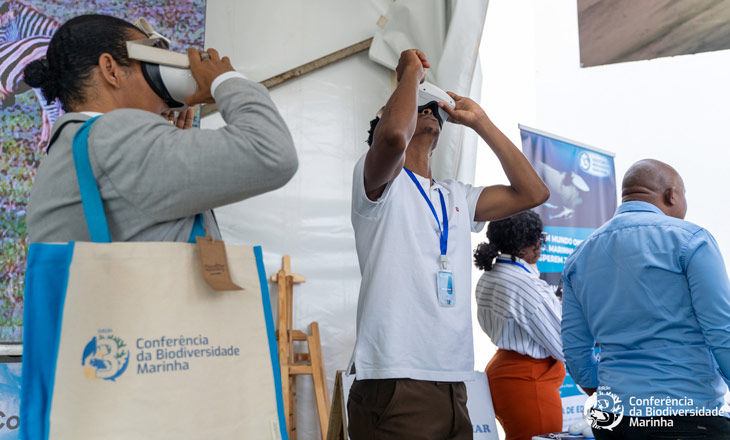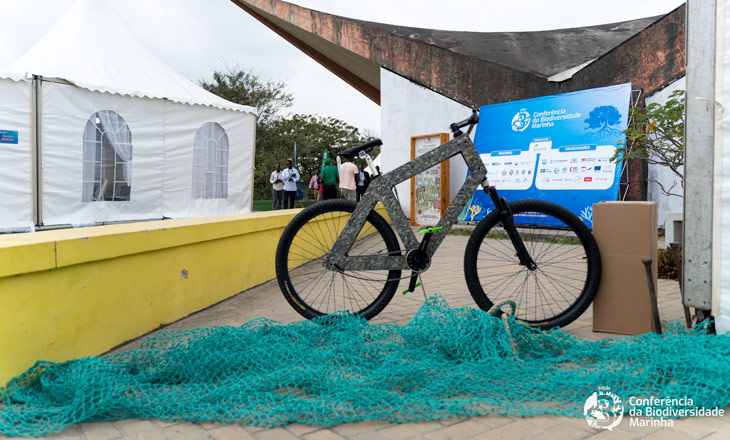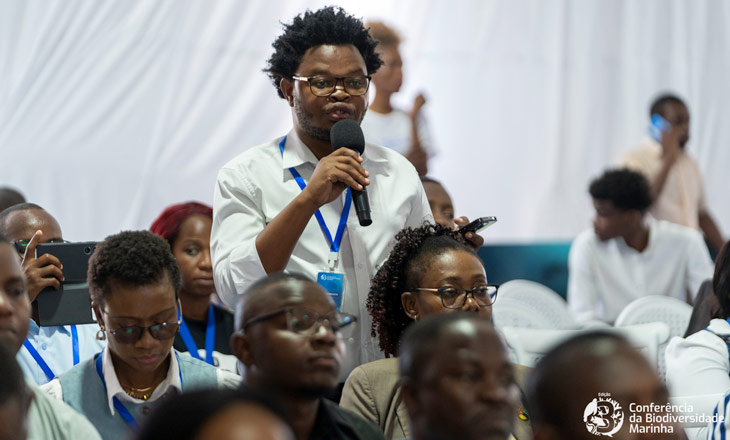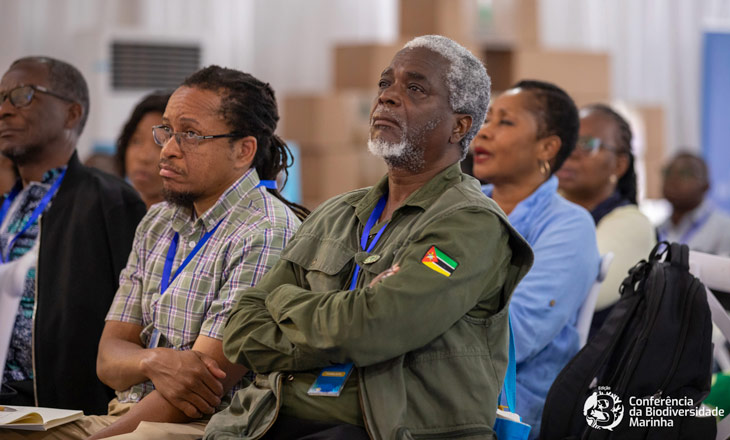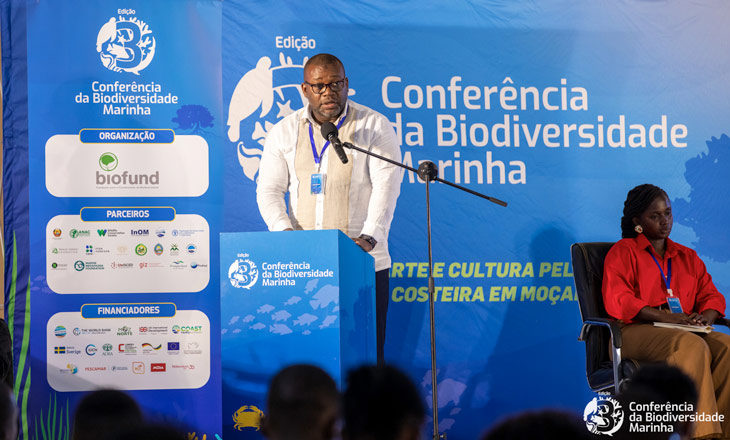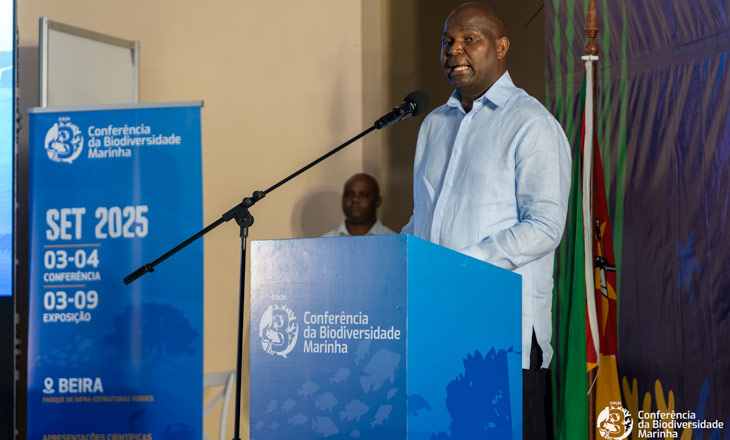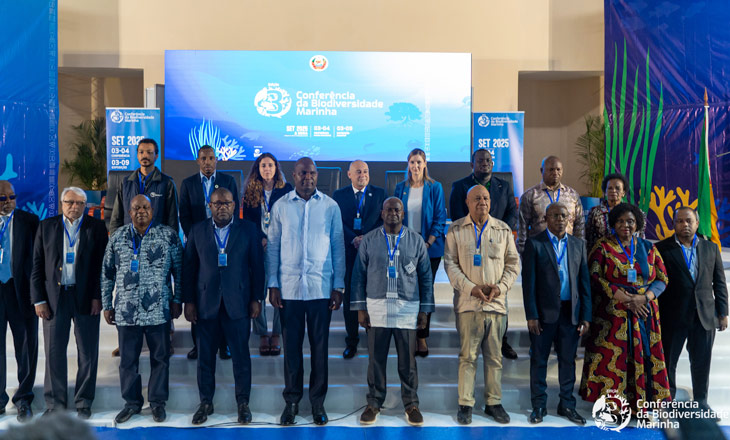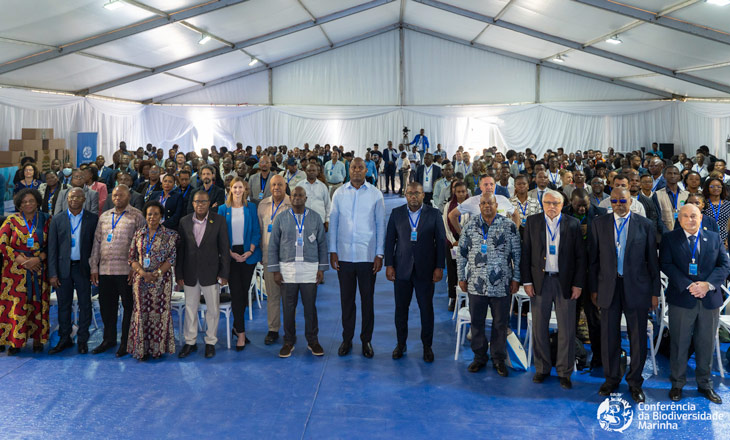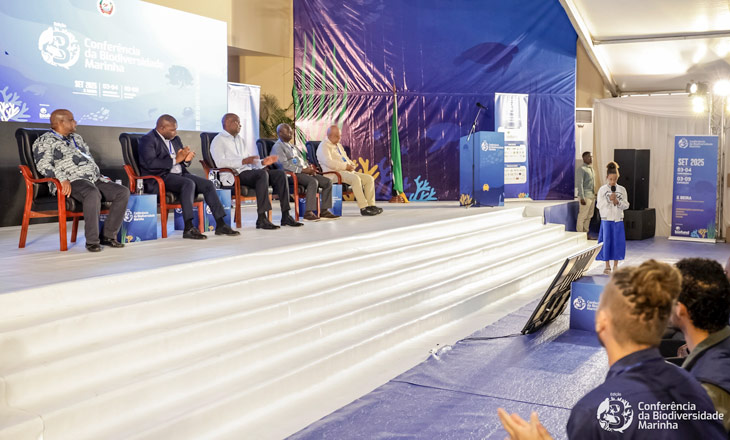The 3rd Marine Biodiversity Conference (CBM) closed in Beira with a clear and mobilising message: Mozambique is an ocean nation that turns ambition into action. At the opening, presided over by His Excellency Daniel Francisco Chapo, President of the Republic, the Government reaffirmed commitments to biodiversity and the blue economy. “Unite public policy, science and civil society to turn strategic vision into tangible results,” the Head of State stressed.
Published at 11/09/2025
3rd Marine Biodiversity Conference: Government leadership, presidential inspiration, and a coalition that makes it possible
At the Chiveve Park, chosen for its symbolism, “well-planned nature-based solutions […] protect lives and boost the local economy.” The President underlined the centrality of education: “environmental education is one of the cornerstones for ensuring the effective protection of marine ecosystems,” and “We want schools, universities and communities close to the sea to be a living laboratory.”
Government in full force, at the highest level
Beyond His Excellency the President of the Republic, those present included the Secretary of State for the Sea; the Governor and Secretary of State of Sofala; the President of Beira Municipal Council; teams from the Ministry of Agriculture, Environment and Fisheries (MAAP) (including InOM – Mozambique Oceanographic Institute, Museus do Mar, ADNAP – National Fisheries Administration), ANAC – National Administration for the Conservation Areas, ProAzul – Blue Economy Development Fund, INIP – National Institute for Fish Inspection, and the National Directorate of Fisheries and Aquaculture; as well as MIREME – Ministry of Mineral Resources and Energy (via the National Directorate of Geology and Mines). This active presence was decisive for aligning themes, facilitating sessions, and mobilising the fair and exhibition.
Four pillars – what is underway, what science showed, and what is recommended
1) Coastal and marine biodiversity
Underway: strengthening integrated management of critical ecosystems (mangroves, seagrasses, reefs, dunes); strengthening Community Fisheries Councils (CCPs); applied research on beneficial use of dredging residues.
Findings/alerts: records of the invasive species Metapenaeus dobsoni; detection of WSSV (white spot syndrome virus) in wild shrimp; development of a LAMP assay (rapid, low-cost) for field diagnostics; description of a new parasitic species associated with Inhaca’s mangroves. These results call for continuous monitoring and adaptive management.
Recommendations/decisions: deepen cumulative impact assessment (extractive industry, fisheries, tourism, transport) and strengthen CCPs as instruments of local governance and dissemination of good practices.
2) Marine Protected Areas (MPAs)
Underway: consolidation of existing MPAs (ecological monitoring, enforcement, adaptive management) and use of tools such as METT and national databases; advancing debates on legal expansion and co-management with communities.
Findings/alerts: gaps in human and financial resources and the need for consistent datasets to inform decisions.
Recommendations/decisions: prioritise consolidation before new expansions, while aligning with the 30×30 target; diversify finance (blue bonds, debt-for-nature swaps, blue carbon, payments for ecosystem services (PES), conservation trust funds).
3) Ecosystem-based Adaptation (EbA)
Underway: alternative livelihoods (honey, seaweed) to ease pressure on fisheries; mangrove restoration with fair benefit-sharing and blue-carbon opportunities; effective co-management in Maputo National Park; pilots for mangrove crab aquaculture (Metuge); circular economy converting marine plastic into 3D-printing filament.
Findings/alerts: informed community participation and transparent agreements are decisive for lasting benefits.
Recommendations/decisions: explicitly integrate EbA into the Blue Economy Strategy and coastal planning to reduce risks, create decent jobs, and scale solutions with the private sector.
4) Environmental education
Underway: early introduction in schools and communities; youth clubs, diving and ocean literacy; creative initiatives (music, theatre, games) adapted to local context; circular-economy cases such as “Moeda Azul” (AMOR).
Findings/alerts: documenting and integrating traditional knowledge into management instruments makes solutions both scientifically grounded and socially legitimate.
Recommendations/decisions: climate-friendly municipal policies (e.g., extended producer responsibility for plastics), aligned with community participation and technical support, especially in vulnerable coastal cities such as Beira.
A “sustainable, inclusive, job-creating blue economy,” the President emphasised, calling on Government, academia, civil society, the private sector, partners and communities to act in synergy.
A platform that links science, communities and the State – and at scale
There were 694 in-person participants and 20,059 online over the two days of the conference (20,753 in total), plus 1,011 in the environmental-education and exhibition activities – reaching 21,764 people throughout the programme.
Acknowledgements – funders
BIOFUND expresses its deep gratitude to the funders of this 3rd edition: Blue Action Fund (BAF); World Bank – MozNorte; Government of Sweden; COAST Facility – DAI; IUCN; ADRA; Portuguese Cooperation; GIZ; Peace Parks Foundation (PPF); WIOMSA; UK Blue Planet Fund – JNCC; AICS; BIOFUND – Cartão BIO; Pescamar; BCI; VISTA; BIM; MOZA. Our sincere thanks to all.
Acknowledgements – collaborators and partners
BIOFUND likewise expresses deep gratitude to the Government of Mozambique and to institutional collaborators and partners for their decisive role in this 3rd edition – in particular for the presence and leadership of His Excellency the President of the Republic – for political leadership, technical coordination and active participation as facilitators, speakers and panellists, as well as support to the fair, exhibition and field visits around the city of Beira (insert the specific locations): Government of Mozambique (Presidency of the Republic; MAAP and tutelary institutions – InOM, Museus do Mar, ADNAP; ANAC; ProAzul; INIP; National Directorate of Fisheries and Aquaculture); Provincial Government of Sofala; Beira Municipal Council; MIREME (via the National Directorate of Geology and Mines); WCS; academia and research networks; civil-society organisations; private sector; youth and coastal communities. Our heartfelt thanks for your commitment, availability and joint work.
The legacy ahead
An immediate roadmap was set out: consolidate co-management with communities; scale up mangrove and reef restoration; strengthen monitoring and data; secure long-term finance; and embed environmental education as a structuring pillar. BIOFUND will continue its mission to mobilise resources, fund what works and share evidence, in partnership with the State and communities. “This conference creates the right platform to consolidate alliances, accelerate learning and scale solutions,” the President underlined.
The 4th Marine Biodiversity Conference will take place in Inhambane province next year (2026).

